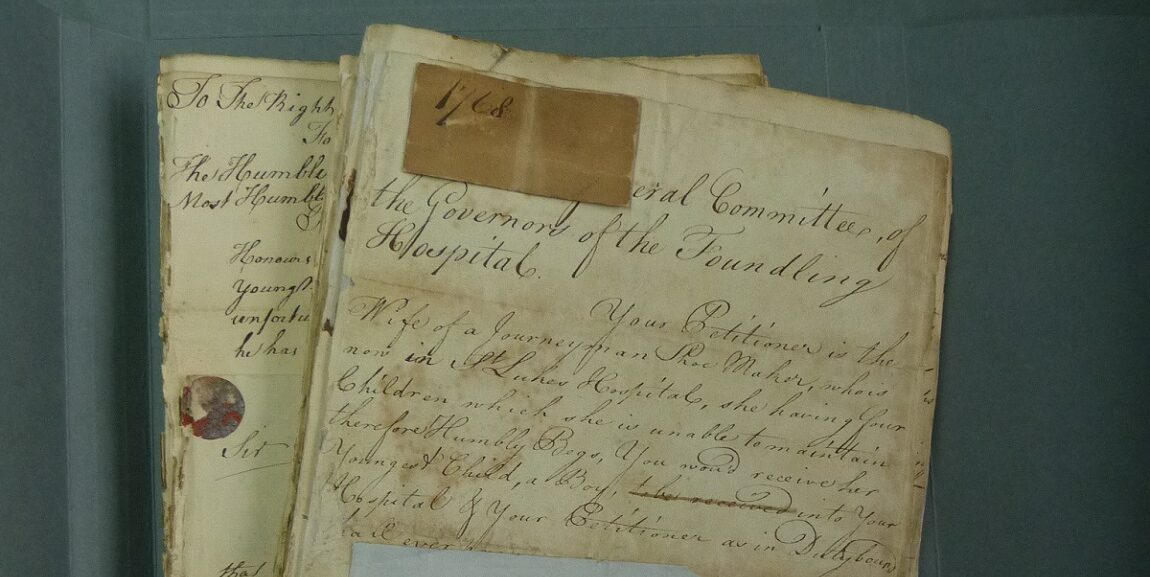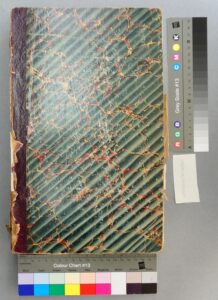Our fantastic conservators are busy in our archives, restoring our precious artefacts so that they can be digitised for future generations. This blog series explores the finer detail of their work, in their own words.
These petition letters were bound together in a series of volumes in the early 19th century and they are still in their original mid-19th century binding, with a detached front board and a peeling leather spine attached with animal glue to the spine. As the letters are to be digitised, the decision was made to take the book apart, repair the letters and to not rebind them.
The front two letters were already loose and someone had repaired them once before. The letters have been sewn together, with a lot of animal glue on the spine. Some notes linked to individual letters have been attached with wax, glue or metal pins.
The mixture of wax, glue and sewing causes the letters to be rigid, tearing the papers and preventing people from reading the contents.

The stab-sewing hooks through large sections of the book and ‘saws’ through it as the pages are turned. Over time it cuts through the paper.
The pins are pulled as the pages are turned and tears through the paper. Eventually the pin will come loose and pull a fragment of text with it.
The letters are all different sizes – some are scrap of papers while others protrude outside of the boards. The larger pages have to be folded in or they are bashed against the shelf. These folds themselves tend to weaken and tear as they are moved back and forth. You can see the creased and battered pages here.

Petition letters before

Petition letters after
The letters have all been removed, repaired and put in a protective folder that is in a archival-approved material that will not harm the paper or inks. A separate folder holds the original binding and metal pins to record how the letters were previously stored.
These folders will go into a larger box and be kept in environmentally controlled rooms to keep them as stable as possible.
All the letters have been separated and repaired with light tissue paper to stabilise the torn edges. Everything had to be cleaned with a brush and dry sponge as they still had dirt and soot from before they were bound together. The animal glue was very stubborn, with some pages requiring strong solvent to soften the adhesive before they could be separated. Some had loose fragments that were reattached.
As this was the first volume of the project, this book was my introduction to what type of materials I would be working on, what condition they were in, and what I would be doing to stabilise them before they were able to be safely read. It was all new and interesting, and I would read snippets of the letters while I was assessing the damage.

